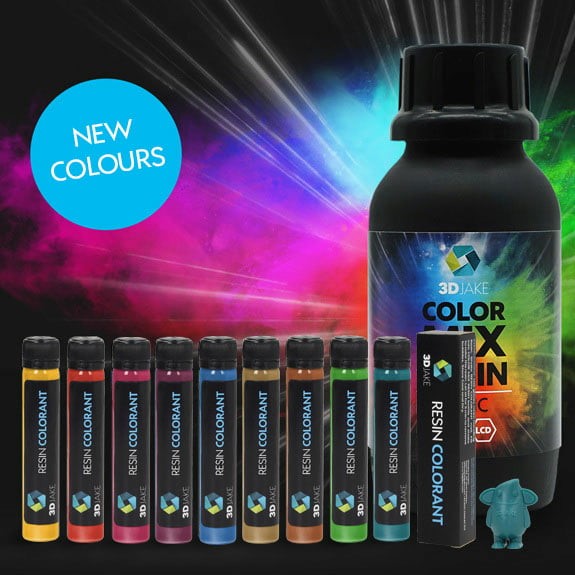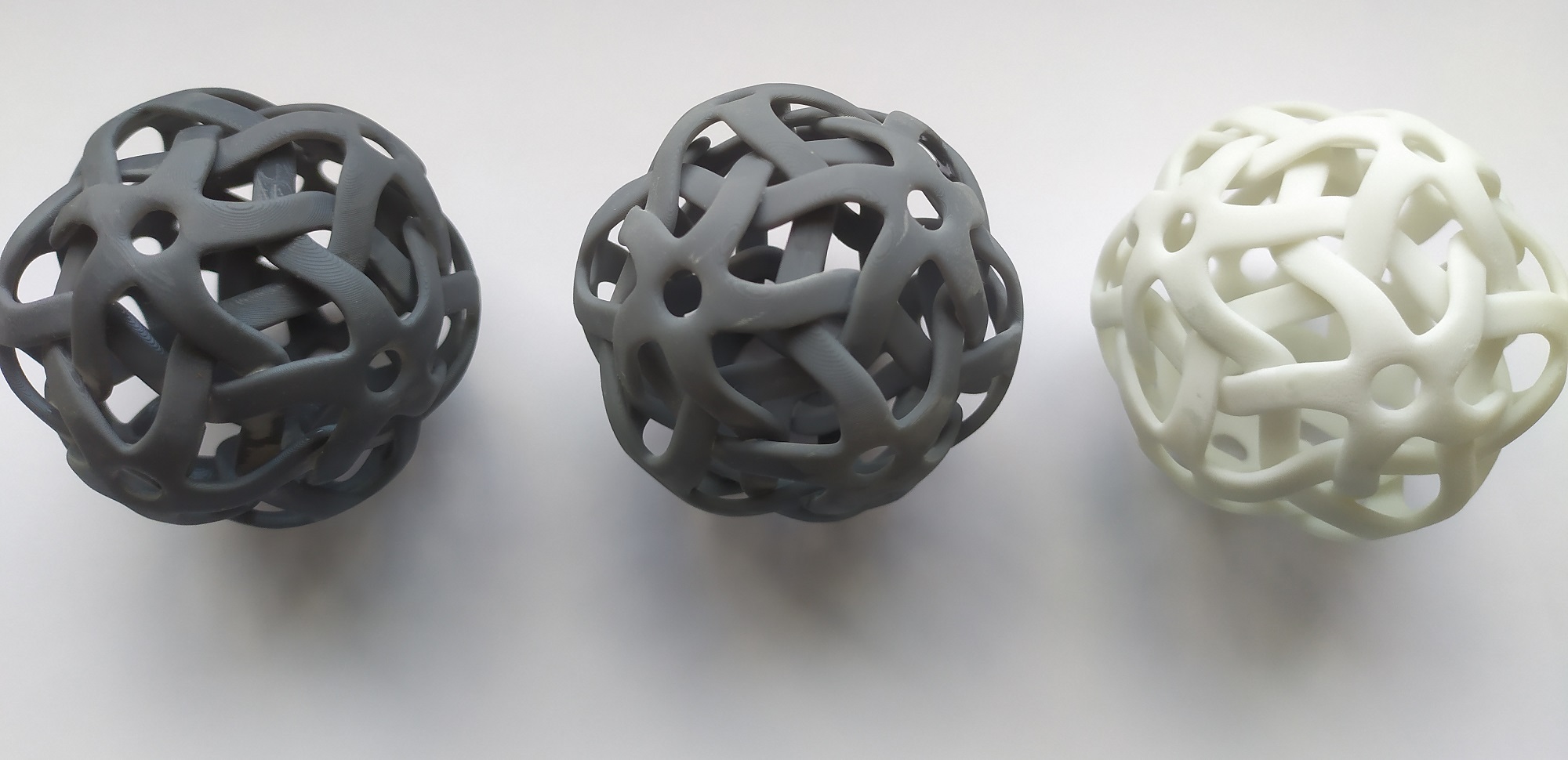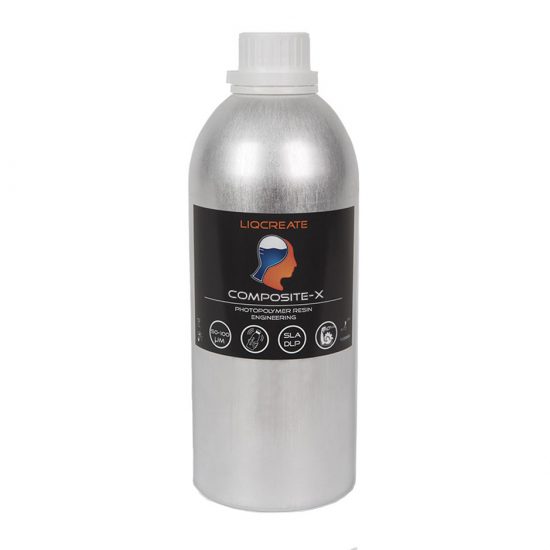Our quality photopolymer resins are used in a wide range of industries including prototyping, industrial, entertainment, consumer goods, healthcare, dental, aerospace and automotive. Even though a lot of resins are available, sometimes we get questions about resins with colors that are not available in our commercial resin range. For larger volumes, we offer custom development, OEM, Private label and white label possibilities. In this article we test and explain how to color Liqcreate Composite-X, a rigid and strong photopolymer 3D-printing resin.
When you just need a couple kilogram resin, it is difficult to customize a product and take it into production. Therefor some of our customers started asking questions about coloring resins. A coloring guide for Premium Tough, Clear Impact, Premium Flex and Elastomer-X were published earlier and can be found in this link. Coloring is easiest when starting with translucent colors and resins that have a high reactivity. Properties of the resin can change when using colorants, like pigment stability, print speed and mechanical properties. In this article we tested a few different 3D-printing resin colorants and resin dyes from 3DJake. Likely other commercial colorants that are specifically marketed for resin 3D-printing will also work well.

Image by 3DJake, commercial resin dyes for resin 3D-printing
Tips and tricks before starting coloring 3D-printing resins
It should be noted that we at Liqcreate are not in favor that our customers are coloring resins as colorants can change the resin and sometimes require quite a bit of experimentation. Although for very low volumes, it is not possible to develop or produce a formulation. If the volumes are increasing, contact us to see if we can manufacture the resin formulation in our factory. There are several reasons to have the resins mixed in a factory, and some points of attention if you decide to mix the resins yourself.
First of all, when working or mixing resins, always wear the right personal protection equipment. This information and more safety information can be found in the safety data sheet (SDS) of the resin. Also work in a well ventilated area. Before coloring resins, make sure that the original resin is shaken properly. If resin or colorant is not homogeneous before mixing, it is almost impossible to duplicate results. Next to this, make sure that the weighing instrument is calibrated and accurate.
Experimenting with colorants in Composite-X
Previously we received customer questions if Composite-X could be colored in black and other colors. At that time we were very hesistant to give a positive answer as Composite-X is a complex product and it is highly filled with ceramics, giving it a white natural appearance. After thinking about it we started a small trial to try to color Composite-X in black. In this test one colorant was selected and ordered from 3DJake, Deep Black. This colorant was tested at 1,25% and 2,5% loading level in Composite-X. 2,5% is the maximum loading level of this colorant according to 3DJake.
In an earlier study we saw that translucent pigments did not really do anything in terms of print behaviour or properties. Mostly colorants that either absorb or block the light emitted by the 3D-printer are the ones to keep extra attention on. For 405nm printers these colors are: yellow, orange, black and any opaque color.
Some test parts were printed with the original Composite-X and with the two colored versions on the Elegoo Mars 3. Simultaneously the optimal exposure time for 0,1mm layer height was recorded. This was recorded because coloring resin will likely have an influence on the exposure times.
Table 1: Exposure times of colored Premium Tough resins at 0,1mm layer height on the Elegoo Mars 2
| Resin | Print time (seconds) at 0,1mm layer height |
| Composite-X | 10,0 sec |
| + 1,25 % Deep Black resin Colorant | 12,0 sec |
| + 2,50 % Deep Black resin Colorantt | 14,0 sec |
For the opaque resin colorants at halve of the maximum loading level, an additional 2 seconds were needed to cure a layer of 0,1mm. For the maximum loading level of 2,5%, a succesfull print could be achieved on the Mars 3 with 14 seconds, which is 4 seconds longer compared to the unmodified Composite-X resin. See the picture of the printed parts below.

Image: Random printed parts with Liqcreate Composite-X (right), Composite-X + 1,25% black pigment (middle) and Composite-X + 2,5% black pigment (left).
What you can see from the parts below, is that the resin itself has a opaque white color. when adding colorants, this white background will interfere and you will always get an opaque look to the part. Usually 2,5% loading of black pigment is enough for a deep black color. But on the left part you can see that you end-up with a dark grey part. Additionally, the chalky surface remains white, which is visible on some parts on the picture if you look from up close.
Pigment stability of colored Composite-X
When we develop a colored resin at Liqcreate, we always stabilize the resins in order to prevent pigment sagging and settling as much as possible. When adding resin colorants from unknown chemical nature into a clear and unstabilized resin, it is always difficult to predict the outcome. The stability tests was performed during and after the 3D-printing process in the Elegoo Mars 3. We printed mechanical test specimen, which took about 5 hours. After that we waited for 19 hours so the total time the pigments could settle was about 24 hours. The bottom of the resin tank was inspected after this time. Some minor sagging was found, but nothing too serious. This did not influence the 5 hour print, as the part quality was great.
What are the benefits of coloring 3D-printing resin
Next to appearance, coloring resin might bring other benefits. Opaque pigments and , black, yellow and orange colorants can block the 405nm light during 3D-printing. This will increase the exposure time needed to print, but in most cases also increases the accuracy. By blocking more light during printing, a more defined depth cure for each layer can be reached. This usually results in less through-cure or bleeding and has a positive effect on the accuracy.
We hoped this was an interesting and educational read. Please send us an e-mail at info@liqcreate.com if you have any questions, comments or remarks. We wish you happy printing and have fun with your colored resin!
Support
Do you need any help with 3D printing our SLA, DLP or LCD resins? We can help you! Just look for the question you have below. If you can’t find it, let us know by contacting us!
Printer Settings →
Composite-X
Liqcreate Composite-X is an extremely rigid and high performance reinforced nano-micro composite resin for SLA, DLP & LCD / MSLA in the range of 385 – 420nm. Perfect for rapid tooling, wind tunnel testing, medical modeling and industrial applications.
Liqcreate Composite-X is one of the stiffest and strongest material available in the market. It has a flexural modulus over 9000 MPa and a flexural strength of 150 – 170 MPa. The material can be used after UV-post curing, or the properties can be boosted with a thermal cure. This material has features like excellent chemical resistance, high strength and high stiffness.
Key benefits |
3D-Printer compatibility |
| · High rigidity | · Phrozen3D Series |
| · High strength | · Atum3D DLP Station 5 |
| · Low odor | · Elegoo & Anycubic series |
| · Good chemical resistance | · And many more |
| · Extremely low shrinkage |



